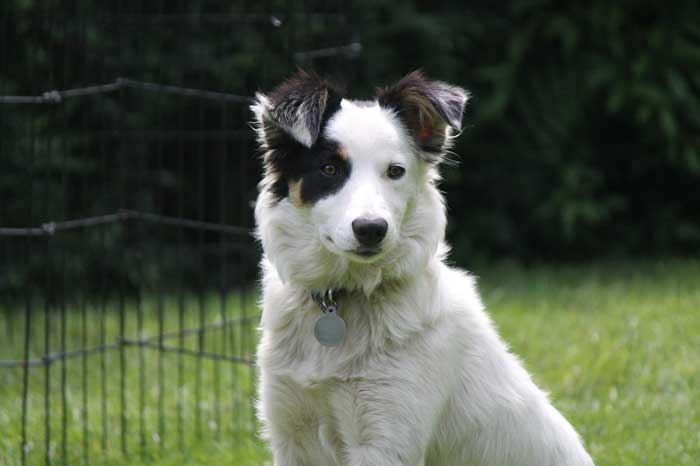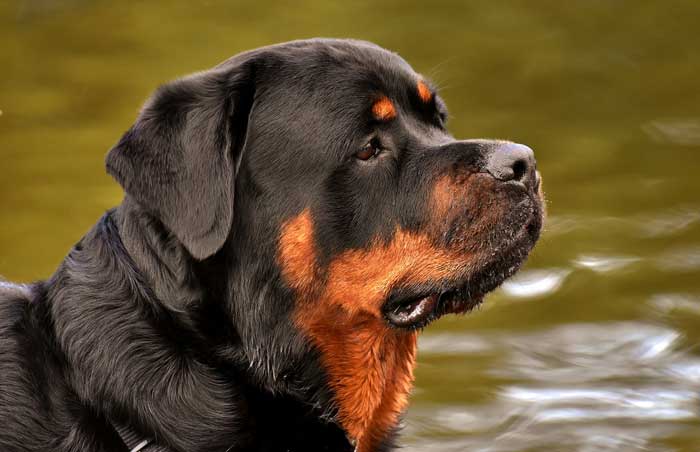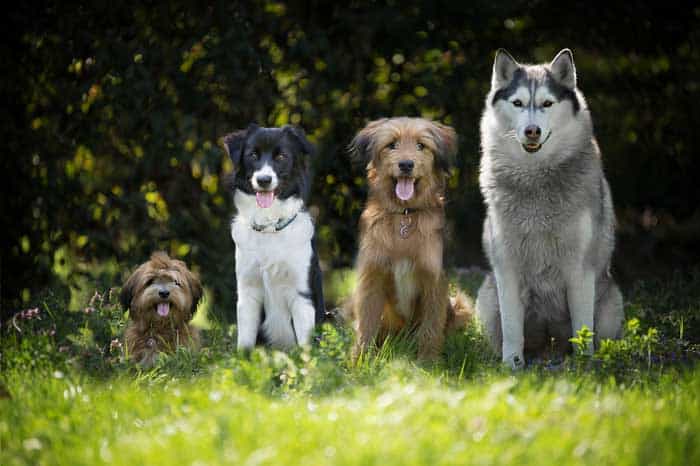Usually, the size of dogs is classified based on their weight. It’s mainly divided into 3 categories: small, medium and large dogs. Although it is also common to be divided into subcategories such as miniature dogs (toy and teacup dogs) and giant or extra large dog breeds.
There is no specific agreement on the classification of dog sizes. Depending on the source that is consulted, the weight ranges vary.
You might see some minor differences between the weight categories, but they usually remain within a few pounds of their general weights.
Here is a general guide that can help you determine what size category your dog belongs to:
- Small dogs. 2 to 22 pounds
- Miniature dogs. 3 to 12 pounds
- Toy dogs. 5 to 12 pounds
- Teacup dogs. 4 or less pounds
- Miniature dogs. 3 to 12 pounds
- Medium dogs. 24 to 57 pounds
- Large dogs. 59 to 99 pounds
- Giant or Extra Large dogs. 100 or more pounds
Why Is It Important to Know the Difference Between a Small, Medium or Large Dog
It is important to know the size category of our dog since there are different care, health, and longevity aspects that come with certain dog sizes we need to take into account.
We have to consider that to know the size of a dog it is not enough to know the breed since in some of them the size can vary considerably.
Below you will find more in-depth information on each dog size category.
Small Dog Breeds

Small dogs are beloved for their miniature size and their enormous personalities. In fact, many people look into getting small dogs because of how adorably tiny they are. I personally find dogs this small to be precious as you can scoop them up very easily.
Small dogs do tend to have health issues that are associated with their smaller statures, though. Because these dogs are bred almost exclusively for their small size, a whole slew of hereditary problems can occur. With that being said, small dogs (aside from teacup dogs) tend to live the longest.
Many of the issues that come with small dogs are behavioral. They tend to be bold and aggressive, often picking fights with just about anyone. While this can be problematic if you do not properly train your small dog, small dogs make for excellent watchdogs because of this.
If you are planning to get a small breed of dog, you should expect to deal with lots and lots of barking and you should consider what your neighbors will think of the loud, yippy barks that small breeds often have.
The average lifespan of an otherwise healthy small dog breed is going to be about 10 to 13 years, although they can live longer in some cases. For instance, Chihuahuas, a common small dog breed, can live between 12 and 18 years.
The category of small dogs tends to range from 2 to 22 pounds. The height of a small dog breed can range from 6 to 18 inches.
Small dog breeds that are the most common will include:
- Beagle
- Boston Terrier
- Cocker Spaniel
- Cavalier King Charles Spaniel
- Yorkshire
Toy Dog Breeds

Toy dog breeds are a smaller classification of the small dog breed. They tend to be extremely small and they are exclusively pets kept for their small size and stature. Some people argue that they make up for their small size with massive personalities.
This personality manifests in activity and vocalization. These dogs love to run around, shouting, and playing with their favorite people. If you are not interested in such a lifestyle, you should consider getting another type of dog instead.
These dogs also tend to have long lifespans, usually between 12 and 18 years depending on the specific breed of dog. They usually have minimal health issues, aside from any injuries sustained from picking a fight with a Pitbull.
This category of dogs tends to be closer to 5 to 12 pounds in weight and never breaching 12 inches in height, aside from some specific breeds.
Some of the more popular breeds of toy dogs include:
- Chinese Crested
- Maltese
- Shih Tzu
- Pekingese
- Pomeranian
Teacup Dog Breeds

Teacup dogs are yet another small breed of dog but this time they are even smaller than toy dogs. They are bred almost exclusively for that iconic size and they are an incredibly vocal bunch of dogs.
It is a little bit more difficult to classify teacup dogs for what they are as some major organizations such as the American Kennel Club don’t recognize teacup dogs as specific breeds. However, it is usually considered a dog that weighs 4 pounds at most as a Teacup dog.
This means that teacup dogs are very much some of the smallest dogs that you can find out there.
You should keep in mind that because these dogs are bred so exclusively, there is a variety of health and hereditary problems that come with them. While they can live for a long time, it can cost a lot of money to care for these problems.
Some breeds that are commonly called teacup dogs include:
- Teacup Maltese
- Teacup Pomskies
- Teacup Yorkshire Terriers
- Teacup Bichon Frisé
- Teacup Chihuahua
Medium Dog Breeds

Medium dog breeds can be considered the sweet spot of all dog breeds. The dogs won’t be too large but they won’t be too small. They are playful but not hyperactive.
These dogs are a loving addition to any family who will welcome them.
These dogs don’t tend to live as long as their smaller counterparts, lasting closer to 10 to 13 years instead. This is still a long lifespan, but the larger a dog gets, the shorter it will live. This is something to keep in mind when you are searching for a new dog to take into the house.
These dogs do tend to have some health problems but not that many. Certain breeds might have trouble with their hips, but it depends almost entirely on the breed.
If you are looking for a work dog, medium dog breeds are ones to look at. Some of them will be better at guarding and watching, whereas others can make excellent service or emotional support animals. These dogs are not always the best for hard, heavy labor though, depending on where they come from.
Medium dogs are usually between 24 and 57 pounds and they stand at a height ranging anywhere between 18 to 25 inches at the shoulder. The head can add a considerable amount of height, depending on the dog.
Because this is one of the largest groupings of dog breeds, there are many examples that you can choose from. Some of the more well-known breeds include:
- Bulldog
- Basset Hounds
- Border Collie
- Dalmatian
- Australian Shepherd
Large Dog Breeds

These dogs are large and don’t always realize it. Some of the friendlier dogs of this category will want to get up onto your lap and cuddle with you even if they are half your height.
Large dogs are usually very friendly, although the more aggressive breeds can become dangerous. Large dogs can come in many different variations, some with long flowing hair and others with short, easy-to-manage hair.
Large dogs do not tend to live that long, unfortunately. Depending on just how large your large breed of dog is, its lifespan can be closer to 8 years. Generally, large dogs will live between 8 and 10 years, depending on health.
Also, unfortunately, large dogs tend to have more musculoskeletal problems, almost always in the hips. This is because of the size of the dog. If you are looking for a working dog, especially one that will be doing hard labor, this is something to keep in mind.
Speaking of working dogs, large dogs can be great sled dogs. These dogs might not always be the best service animals, though, given their inherently friendly nature. Depending on the breed of dog, you can expect to have a terrifying guard dog if you choose a dog such as a pit bull.
Large dogs will usually weigh between 59 and 99 pounds and can be as tall as 30 inches or more. Some dogs will be tall and slender, whereas others will be large and bulky.
As for which dogs you can expect to see in the large dog breed classification, some of the most popular dogs include:
- Rottweiler
- German Shepherd
- Alaskan Malamute
- Boxer
- Golden Retriever
Giant Dog Breeds

If you thought that the large dog breeds were as large as dogs get, you were sorely mistaken. There are some dogs out there that can be absolutely massive in size. However, many drawbacks come with this size.
Giant dogs are wonderful companions if you have the strength to handle them when they get excited on a walk. They are usually very friendly and will attempt to sit on your lap despite weighing as much as you do.
They are good with some families, but you should be careful letting them around children as their large size might accidentally hurt the kids despite the friendly demeanor.
Giant dogs, sadly, have the shortest lifespan of them all. They usually live between 5 and 8 years. This is because of a theory about the size of a dog and relation to its weight.
It has been thought that the size of a dog correlates directly to its lifespan, which is why large dogs tend to live for very short periods of time compared to small dogs. The rule of thumb is for every four pounds of weight a dog has, you take about a month off the lifespan. When your dog weighs about 200 pounds, that’s a lot of months to remove.
These dogs also have a slew of health issues, both hereditary and musculoskeletal. You can expect to spend a considerable amount of money keeping these dogs healthy throughout their lives.
Because of the health problems and short lifespans, while these dogs are fantastic at pulling heavy loads and hunting, they will not be able to work for nearly as long. This is something to keep in mind when you are looking at giant working dogs.
Giant dogs can weigh anywhere from 100 pounds on up with most healthy dogs weighing not more than 200 pounds. They usually show their size more in bulk rather than height, although some giant dogs can reach well over 30 inches in height.
Some of the most recognizable breeds of giant dogs include:
- Great Dane
- Irish Wolfhound
- Saint Bernard
- Mastiff
- Newfoundland
Final Thoughts
There is a lot to consider when looking at the size of a dog.
Generally, smaller dogs will live longer, have fewer issues with health, and are more talkative than larger dogs.
On the other hand, while larger dogs have health issues and don’t live as long, they make excellent working dogs that get the job done quickly and efficiently.
Small dogs also tend to be loud and aggressive, while large dogs tend to be quiet and calm.

